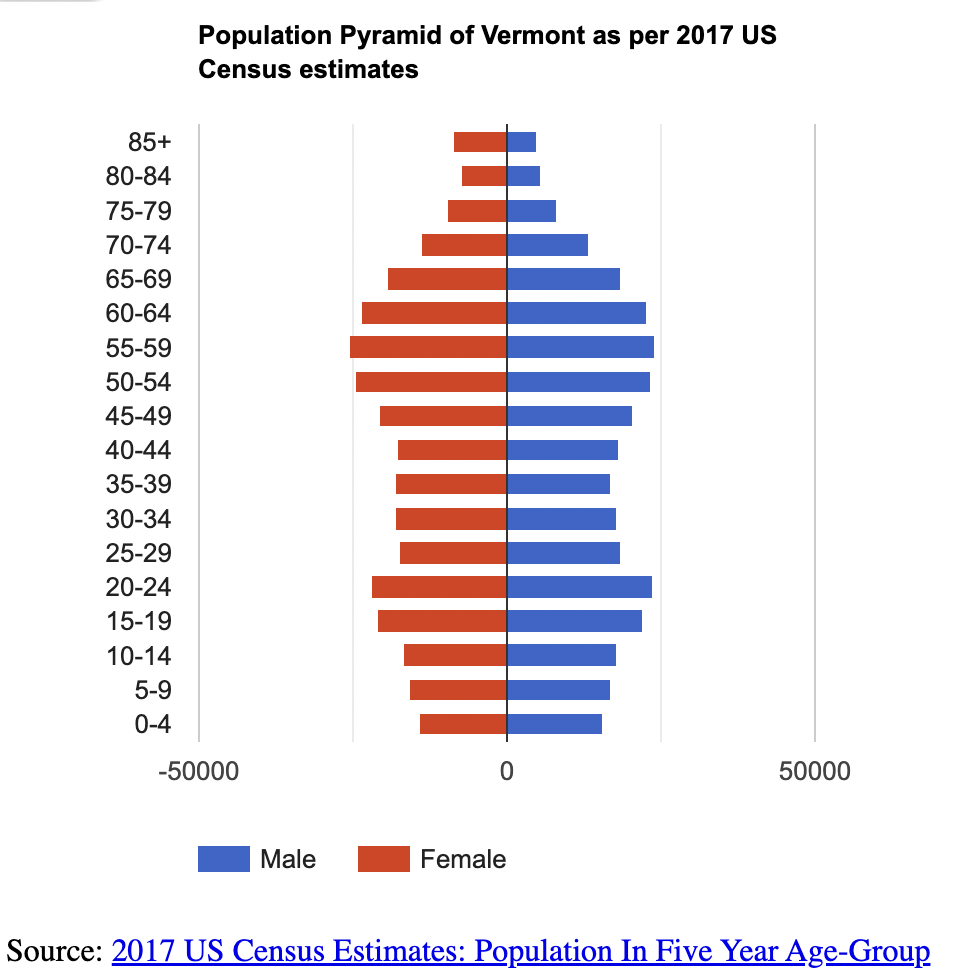Vermont’s dependency ratio is around 38%. That means a little under half of the population is not able to take care of themselves. A majority of this percentage is our elderly population. According to the US census 20.6% of Vermont’s population is 65 or older. As someone who has lived in the Northeast Kingdom for my entire life, I know this statistic reads true. I also know that this dependency ratio causes big problems for our community. We have a surplus of jobs we cannot fill in places like health fields and even grocery stores. There are many answers to this question. Living in Vermont (specifically the NEK) is costly, with gas money and heat barely being covered by the low wages for jobs like teaching and food services. We don’t live in the most welcoming area; freezing temperatures and personalities can definitely be a deterrent. The systems we have in place cause older Vermonters to suffer with poor care due to lack of staffing, but also prevent new people from arriving. The cycle is endless.
The older population can cause even bigger economic problems in the future. We already see local businesses being shut down and changing due to lack of workers, but we will see a bigger economic shift. We won’t have people to work in jobs, but we won’t have a need for certain jobs either. We will see the consolidation of schools. We will see it get pricer and pricer to live in our beautiful state as grocery stores, theaters and malls get shut down, and people have to travel farther. Pittsburgh, a once thriving city, has been rapidly declining. Pittsburgh is currently unable to support their community adequately. A once thriving metropolis is struggling to keep up with the rest of the country. Vermont, as a state, already has a low population but with our population aging and declining, we will likely see a future similar to Pittsburgh. We will lose parts of home that we thought would never change because we do not have enough people to fund them and work at them.
